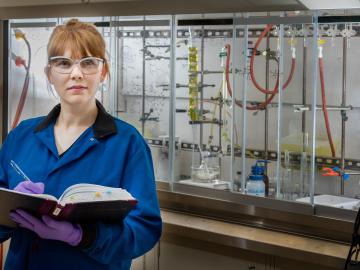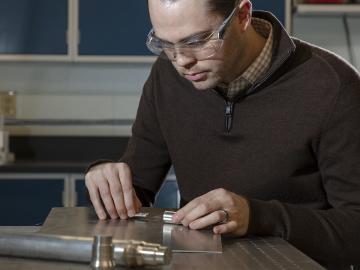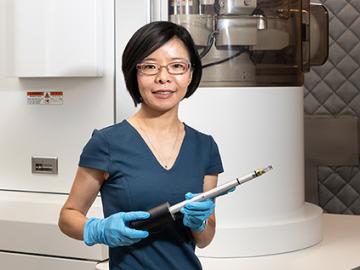
Filter News
Area of Research
- Advanced Manufacturing (6)
- Biological Systems (1)
- Biology and Environment (4)
- Building Technologies (1)
- Clean Energy (60)
- Climate and Environmental Systems (2)
- Computational Engineering (1)
- Computer Science (8)
- Fusion Energy (6)
- Materials (55)
- National Security (5)
- Neutron Science (23)
- Nuclear Science and Technology (11)
- Quantum information Science (3)
- Supercomputing (31)
- Transportation Systems (1)
Date
News Topics
- 3-D Printing/Advanced Manufacturing (15)
- Advanced Reactors (7)
- Artificial Intelligence (12)
- Big Data (7)
- Bioenergy (9)
- Biomedical (5)
- Biotechnology (1)
- Clean Water (5)
- Composites (2)
- Computer Science (35)
- Cybersecurity (5)
- Energy Storage (8)
- Environment (19)
- Exascale Computing (2)
- Frontier (2)
- Fusion (5)
- Grid (5)
- Isotopes (1)
- Machine Learning (5)
- Materials Science (20)
- Mercury (1)
- Microscopy (5)
- Molten Salt (1)
- Nanotechnology (6)
- Neutron Science (18)
- Nuclear Energy (17)
- Physics (6)
- Polymers (2)
- Quantum Science (10)
- Security (2)
- Space Exploration (4)
- Summit (9)
- Sustainable Energy (8)
- Transportation (12)
Media Contacts

An organic chemist at Oak Ridge National Laboratory, Santa Jansone-Popova focuses on the fundamental challenges of chemical separations that translate to world-changing solutions for clean water and sustainable energy.

The Department of Energy has established the Innovation Network for Fusion Energy program, or INFUSE, to encourage private-public research partnerships for overcoming challenges in fusion energy development.

For the first time, Oak Ridge National Laboratory has completed testing of nuclear fuels using MiniFuel, an irradiation vehicle that allows for rapid experimentation.

A study led by Oak Ridge National Laboratory explored the interface between the Department of Veterans Affairs’ healthcare data system and the data itself to detect the likelihood of errors and designed an auto-surveillance tool

Scientists have discovered a way to alter heat transport in thermoelectric materials, a finding that may ultimately improve energy efficiency as the materials

A team led by scientists at the Department of Energy’s Oak Ridge National Laboratory explored how atomically thin two-dimensional (2D) crystals can grow over 3D objects and how the curvature of those objects can stretch and strain the

With operating licenses for nearly all nuclear power plants set to expire in the 2030s and 40s—a pending loss that would affect a fifth of the country’s electricity supply—U.S. utilities will need to find a way to respond to what has been called the “nuclear cliff.”

Galigekere is principal investigator for the breakthrough work in fast, wireless charging of electric vehicles being performed at the National Transportation Research Center at Oak Ridge National Laboratory.

Miaofang Chi, a researcher at the Department of Energy’s Oak Ridge National Laboratory, has received the 2019 Kurt Heinrich Award from the Microanalysis Society (MAS).

An ORNL-led team's observation of certain crystalline ice phases challenges accepted theories about super-cooled water and non-crystalline ice. Their findings, reported in the journal Nature, will also lead to better understanding of ice and its various phases found on other planets, moons and elsewhere in space.


